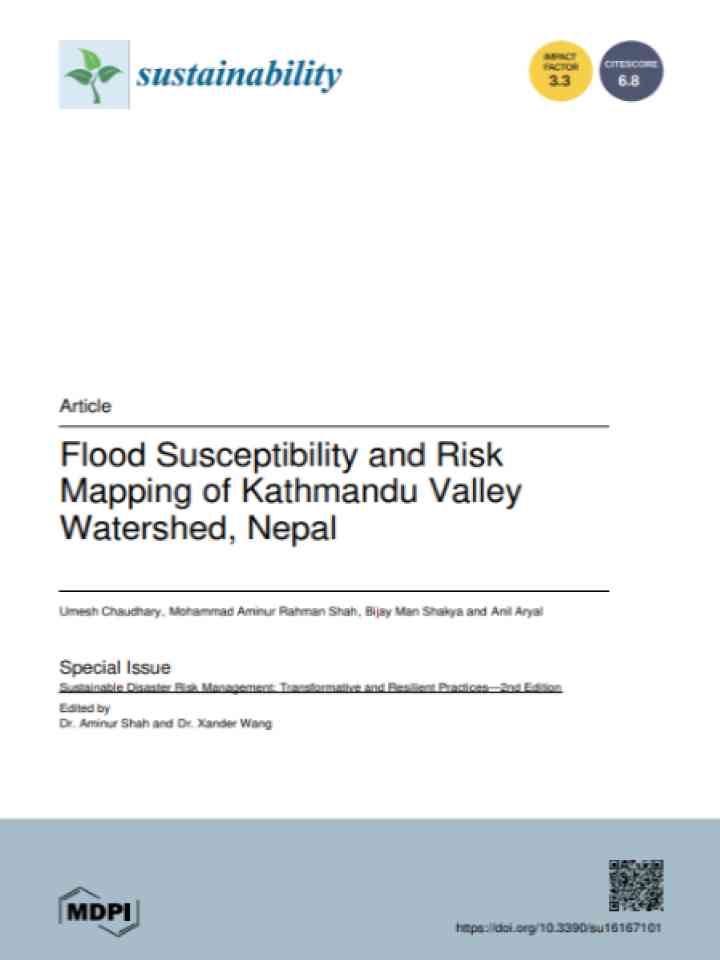Flood susceptibility and risk mapping of Kathmandu Valley Watershed, Nepal
Comprehensive flood risk assessment is often constrained by a lack of appropriate data in high-altitude watersheds, particularly in developing countries like Nepal, where institutional capacities are limited for mapping and monitoring flood-prone communities. This study produced spatial multi-criteria-based flood susceptibility, vulnerability, and risk index maps for the Kathmandu Valley (KV) watershed in Nepal using an Analytical Hierarchy Process (AHP) approach and Geographical Information System (GIS).
Findings include moderate to low flood susceptibility in KV around the watershed but susceptibility is prominent in southern areas. Highly flood-susceptible regions are found mainly along the riverbanks. Flood vulnerability, primarily influenced by population density and literacy rate, is moderate to low in most areas of the watershed. The high contrast in flood vulnerability scores across the watershed has mainly contributed to the variation of flood risk zones. The study findings will help policymakers develop location-specific sustainable flood risk management strategies for the flood-vulnerable communities in the KV watershed.
Explore further
